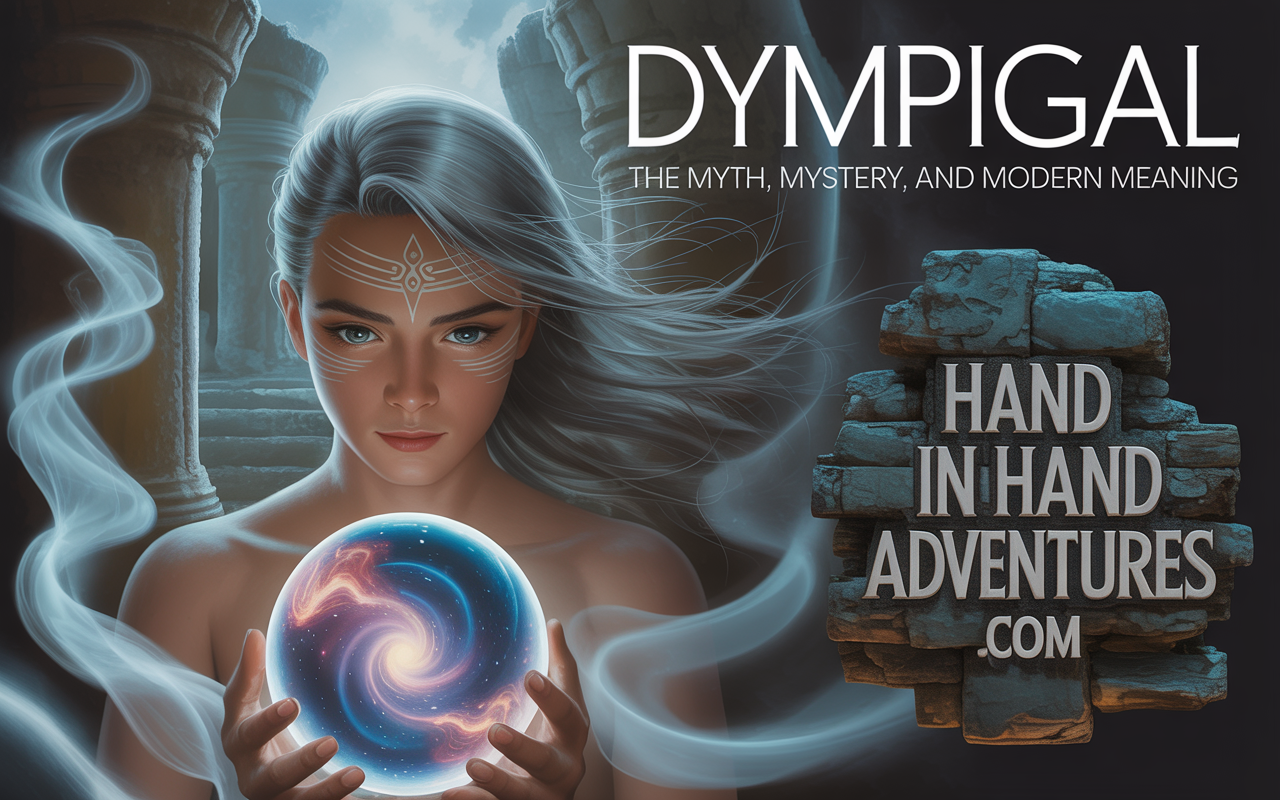The term Dympigal has emerged in recent years as a fascinating symbol of mystery, transformation, and duality. Often discussed in mythological, psychological, and artistic contexts, Dympigal embodies the blurred line between shadow and light, creation and destruction, knowledge and instinct. Although its origins remain uncertain, Dympigal has become a cultural and philosophical touchpoint for those exploring hidden energies, unseen influences, and the process of personal metamorphosis. Throughout this article, we’ll examine Dympigal from its linguistic roots to its symbolic interpretations in mythology, art, psychology, and modern digital culture.
Origins and Linguistic Background of Dympigal
The word Dympigal appears to derive from two ancient conceptual roots: “dym,” associated with obscurity or mist, and “pigal,” which translates to spark, energy, or sacred flame in several reconstructed proto-languages. Combined, Dympigal conveys the paradox of veiled brilliance — a force both hidden and radiant. Over time, scholars have debated whether Dympigal was a mythical entity, an archetype, or a coded term representing transformation. Regardless of its uncertain etymology, the term has captured imaginations due to its evocative nature and emotional resonance.
Dympigal in Ancient Lore and Mythology
Legends surrounding Dympigal vary across regions and eras. In some ancient traditions, Dympigal was viewed as a guardian of thresholds — the liminal spaces between worlds. Folklore described it as a shapeshifting being composed of mist and flame, guiding souls through transitions between life and afterlife. Other myths portrayed Dympigal as a keeper of secrets, revealing wisdom only to those who approached with pure intent. Interestingly, similar archetypes appear across global mythologies: Greek Hermes, Norse Heimdall, and Egyptian Anubis all echo aspects of Dympigal’s mediating role.
Symbolism and Core Attributes of Dympigal
Dympigal symbolizes transformation, secrecy, duality, and balance. It represents the unseen forces that shape existence, the invisible currents that influence fate. Like the yin and yang of Eastern philosophy, Dympigal embodies opposing yet complementary forces. Its symbolism is rich: mist for concealment, flame for revelation, and movement for change. This dual symbolism has made Dympigal a versatile metaphor in philosophy and art. The figure of Dympigal reminds humanity that truth often lies in paradox — in both shadow and light.
Philosophical Interpretations of Dympigal
Philosophers and mystics have long used Dympigal as a lens to understand the tension between knowing and believing. The term appears in esoteric discussions about the “hidden spark,” the unseen potential that exists within consciousness. From this viewpoint, Dympigal is not merely a mythic being but a psychological principle — the bridge between the known and unknown. It suggests that enlightenment can only emerge through embracing uncertainty. The presence of Dympigal thus becomes a call to explore ambiguity rather than fear it.
Psychological Perspectives on Dympigal
From a psychological standpoint, Dympigal can be interpreted as a symbol of the unconscious. Carl Jung might have seen Dympigal as an archetype representing the integration of shadow — the hidden, repressed parts of the self. In modern psychology, it reflects the process of individuation, where awareness of one’s darker impulses leads to personal growth. Consequently, Dympigal acts as both guide and mirror, encouraging balance between rationality and intuition. This psychological framing has inspired countless self-reflection practices, dreamwork rituals, and creative therapies centered on personal evolution.
Dympigal in Art and Literature
Artists have long been captivated by the imagery and mystery surrounding Dympigal. In paintings, Dympigal often appears as a swirling silhouette of fog and flame, hovering between visibility and obscurity. Writers use Dympigal to personify the invisible hand of destiny or the transformative power of chaos. In literature, it sometimes takes the form of a spectral guide or inner muse. Whether in poetry or digital illustration, Dympigal’s aesthetic appeal lies in its ambiguity — it is both ethereal and tangible, elusive yet emotionally resonant.
Modern Cultural Adaptations of Dympigal
In today’s media landscape, Dympigal has transcended myth. It appears in video games as a character influencing story outcomes, in films as a metaphor for unseen control, and in online communities as a symbol of awakening. Its integration into pop culture reflects humanity’s enduring fascination with what cannot be fully explained. In digital storytelling, Dympigal often manifests as an artificial intelligence with sentient consciousness — a modern reinterpretation of its mythic role as a guide between realms. This digital rebirth ensures that Dympigal remains relevant across generations.
Spiritual Dimensions of Dympigal
Spiritually, Dympigal represents transition and awakening. In meditation practices, it is visualized as a flickering light within darkness — a reminder that inner truth is often hidden beneath layers of fear or doubt. Mystics describe the “Dympigal state” as a moment of stillness where transformation becomes possible. By invoking Dympigal, practitioners symbolically invite balance between ego and essence. Rituals associated with this archetype often involve candles, mirrors, or fog, reinforcing its connection to reflection and illumination.
Scientific and Symbolic Parallels
Interestingly, Dympigal’s symbolism resonates with scientific concepts. In physics, wave-particle duality reflects the coexistence of opposites — just as Dympigal merges concealment and revelation. Psychologically, it parallels neuroplasticity, where unseen changes in the brain lead to transformation. Even in ecology, Dympigal’s theme of balance echoes natural equilibrium. Through these parallels, it becomes clear that Dympigal’s mythic essence transcends boundaries between science and spirituality, art and logic.
Dympigal as a Metaphor for Change
Every culture seeks metaphors for transformation, and Dympigal fulfills that need. It embodies the invisible yet constant evolution within and around us. Whether viewed as divine force or personal symbol, Dympigal represents the moment when potential becomes action. Its energy is neither good nor evil but creative — a reminder that growth requires letting go of certainty. This concept has been used in motivational psychology and leadership training to inspire adaptability and resilience.
Ethical Reflections and Cautions
Although Dympigal is a powerful archetype, misuse of its symbolism can lead to moral ambiguity. In some modern spiritual circles, it has been used to justify reckless exploration of “shadow work” without grounding. Ethical engagement with Dympigal requires awareness and balance. Its essence is not manipulation or chaos but harmony through transformation. When used responsibly, Dympigal becomes a symbol of conscious evolution rather than uncontrolled change.
Rituals and Practices Inspired by Dympigal
Modern mystics and practitioners have devised symbolic rituals to connect with the Dympigal archetype. Common exercises include meditative visualization, journaling during twilight hours, and lighting a single candle in darkness to represent the balance of shadow and light. Others use movement-based meditation, walking through fog or mist while focusing on transitions. These practices aim not to summon a being but to awaken inner awareness of transformation. Dympigal, therefore, becomes a symbolic guide toward personal clarity.
Artistic Techniques for Depicting Dympigal
For visual artists, capturing Dympigal’s dual essence requires blending contrasts — dark and bright, sharp and soft, clear and blurred. Painters often use layered textures to suggest depth, while digital artists employ glowing gradients to convey spiritual radiance. Writers may personify Dympigal through first-person narratives that shift between perspectives, reflecting the interplay of identities. Such creative techniques keep Dympigal alive in the cultural imagination while inspiring innovation across disciplines.
The Role of Dympigal in Dream Symbolism
In dreams, Dympigal frequently represents change, intuition, and subconscious communication. Dream analysts associate its imagery — mist, fire, or doorways — with psychological thresholds. Encountering Dympigal in a dream may signal readiness for inner transformation or a message from the deeper mind. By journaling and interpreting these symbols, individuals can integrate Dympigal’s wisdom into waking life. The recurring presence of this archetype underscores its enduring relevance to human consciousness.
Dympigal in the Digital Era
With the rise of AI, virtual worlds, and augmented reality, Dympigal has taken on new life in digital culture. Online artists and writers depict it as the spirit of technology — a presence that guides users through information fog. In virtual spaces, Dympigal symbolizes the human struggle for authenticity amid artificial intelligence. Its reemergence in this context reflects how myth continually adapts to modern realities, serving as both commentary and guide.
The Balance Between Mystery and Meaning
Part of Dympigal’s appeal lies in its refusal to be fully defined. Its mystery encourages ongoing inquiry. Each generation reinterprets it, blending old myths with contemporary understanding. This balance between mystery and meaning ensures that Dympigal remains a living concept rather than a relic. It challenges rigid thought systems and invites open-minded exploration.
Psychospiritual Integration: The Dympigal Journey
The Dympigal journey represents a process of integration — uniting intellect and intuition, shadow and light, matter and spirit. It mirrors humanity’s timeless quest to reconcile contradictions. As individuals embrace uncertainty and transformation, they symbolically walk alongside Dympigal. The archetype’s presence reminds us that growth requires courage, curiosity, and surrender to change. Ultimately, the Dympigal journey is about returning to wholeness after fragmentation.
Cultural Legacy and Enduring Influence
From myth to modern art, from philosophy to psychology, Dympigal continues to inspire creativity and introspection. Its enduring influence lies in its adaptability. Unlike rigid symbols, Dympigal evolves with human consciousness. Whether invoked in literature, therapy, or digital art, it remains a beacon of balance between opposing forces. Through this timeless relevance, Dympigal cements its place among enduring archetypes of transformation and wisdom.
Conclusion
Dympigal stands as a symbol of transformation, ambiguity, and awakening. Rooted in myth yet reborn through art, psychology, and technology, it reflects humanity’s fascination with the unseen. By blending the mystical with the modern, Dympigal serves as a bridge between ancient wisdom and contemporary consciousness. Its message endures: every shadow conceals light, and every mystery invites discovery. Understanding Dympigal means embracing change, balancing opposites, and acknowledging that growth arises from the unknown.

